Kooikerhondje Dog Breed Characteristics
The Kooikerhondje, known for its striking orange and white coat, is a breed deeply rooted in Dutch heritage. It stands out for combining beauty with agility. This breed was initially used to entice ducks into traps, a testament to its cleverness and adaptability. Today, it thrives in various dog sports, showcasing its versatility.
The Kooikerhondje is loved by many for its friendly nature, making it a favorite among families and dog lovers. However, anyone considering this breed should know its specific health issues and the care it demands.
Understanding Kooikerhondje’s needs is crucial for its well-being and underscores the necessity of ethical breeding practices. When discussing the qualities that make the Kooikerhondje a beloved pet, addressing the efforts required to sustain the breed’s good health is essential. This is especially true as the Kooikerhondje is less common than other breeds.
Key Takeaways
- Kooikerhondje dogs boast an eye-catching orange and white coat.
- They excel in dog sports, demonstrating their agility.
- Health care and ethical breeding are key for their longevity.
The Kooikerhondje is a small, agile dog with a history in the Netherlands, where it was skilled in duck hunting. Its friendly demeanor makes it a hit with families. Owners should prioritize health maintenance and responsible breeding to keep this less common breed thriving.
Quick Facts
The Nederlandse Kooikerhondje hails from the Netherlands and is a small, sporty dog known for its expertise in duck hunting. As a member of the Sporting Group, this breed is energetic and quick, with a confident nature, making it great for hunting and a pleasant pet for families. These dogs typically live for 12 to 15 years, offering a long-term bond with their owners.
The American Kennel Club recognizes the Nederlandse Kooikerhondje and offers essential health, training, and ownership information to support the breed’s well-being. Owners should consider whether their living space suits the breed, understand its need for regular exercise, and be aware of health concerns such as von Willebrands disease and eye issues.
The Kooikerhondje has a rich history dating back to the 16th century when it played a crucial role in duck hunting. This breed nearly vanished during World War II but was officially recognized by the Dutch Kennel Club in 1971, which helped preserve its existence.
Nederlandse Kooikerhondje Dog Breed Pictures
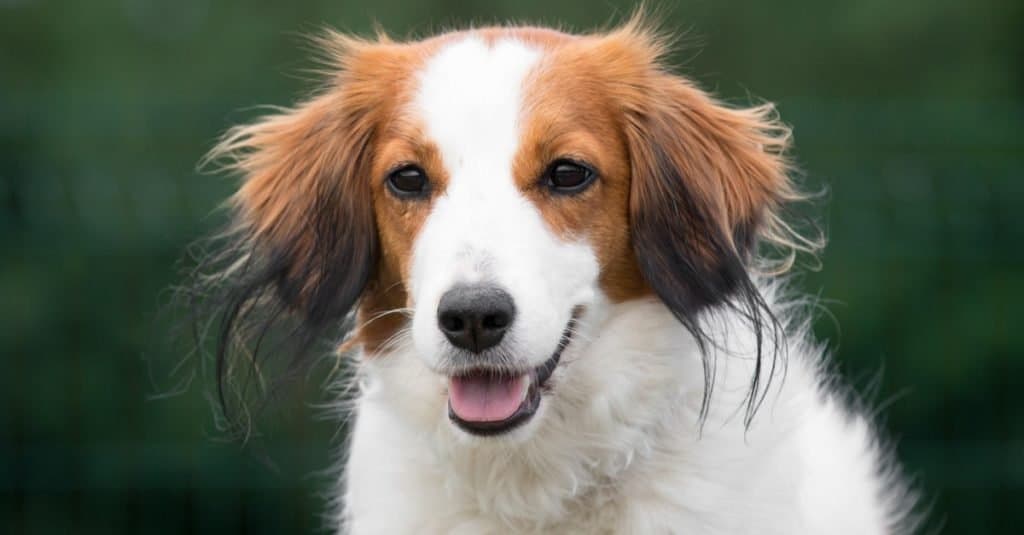
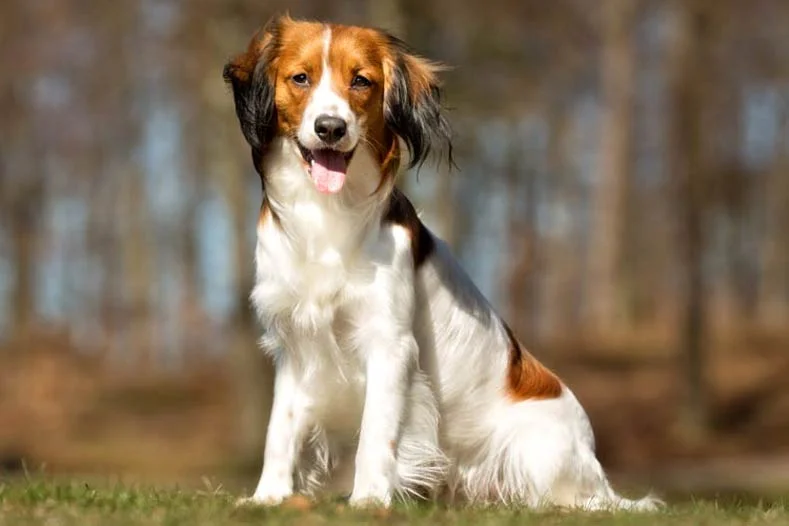
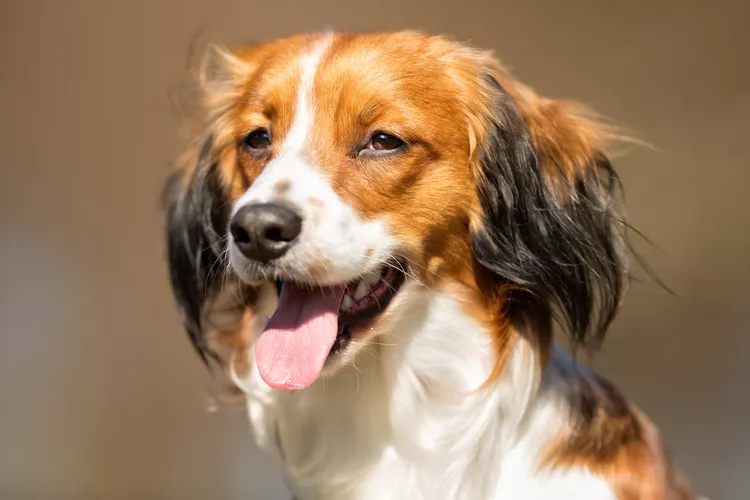
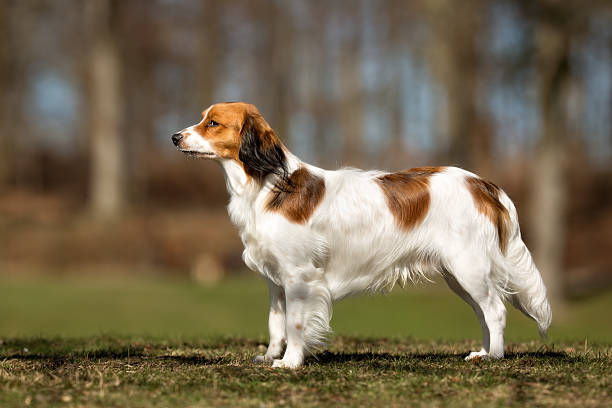
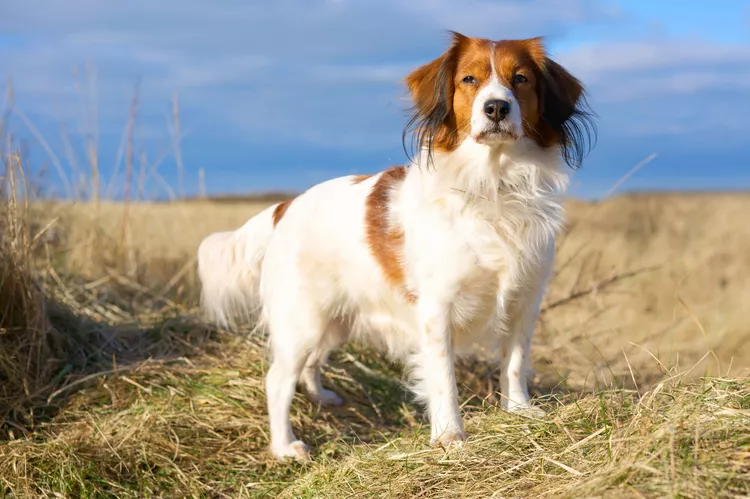
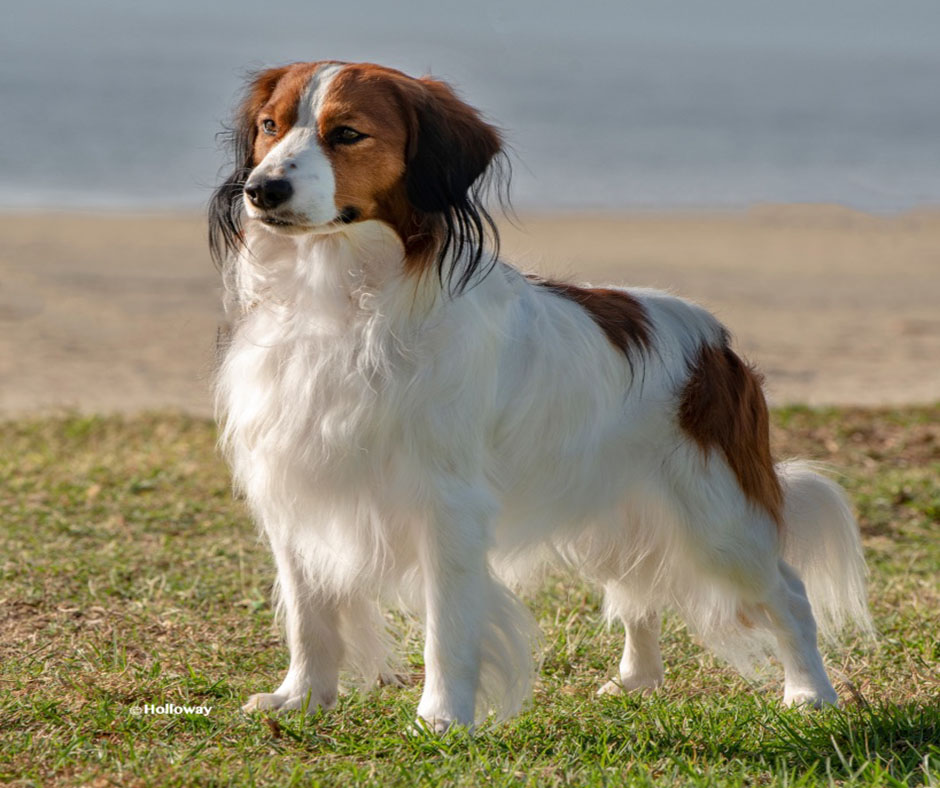
Overview
The Kooikerhondje is a charming small breed that thrives as a waterfowl hunting dog and a loving family pet. This breed, hailing from the Netherlands, was saved from near extinction thanks to the significant efforts of baroness van Hardenbroek van Ammerstol during World War II. Known for their bright and friendly nature, Kooikerhondjes quickly to new settings, making them an excellent fit for various living situations.
When considering a Kooikerhondje, owners need to be aware of health issues that can be passed down genetically, and it’s essential to keep a close eye on their well-being. These dogs have plenty of energy and consistent exercise to avoid weight gain and stay healthy. Apartment dwellers should carefully consider if they can meet the breed’s need for space and regular activity.
Although Kooikerhondjes make affectionate companions, owners must meet their care needs and be mindful of their health.
Breed’s Key Features
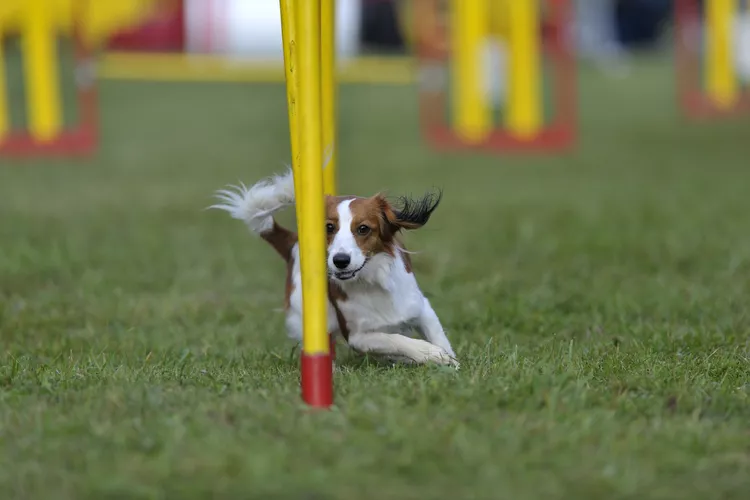
The Kooikerhondje is a medium-sized breed with a coat that’s a vivid mix of orange and white. It has a thickly feathered tail with white, hinting at its background as a hunting dog. This breed is officially recognized by the Dutch Kennel Club and is known for its cheerful demeanor and friendly nature, although it might be shy with new people. These dogs do well in smaller living spaces like apartments if they exercise enough.
Health-wise, Kooikerhondjes can be prone to von Willebrands disease, among other conditions, so keeping an eye on their health is critical. Feeding them a well-rounded diet, ensuring they get plenty of physical activity, and keeping their minds active will help keep them healthy. It’s also crucial to introduce them to various social situations early on to prevent issues with other dogs and help them fit into family life smoothly.
Here’s a snapshot of what the Kooikerhondje is all about:
| Feature | Description | Considerations |
|---|---|---|
| Size & Appearance | Medium size, distinctive coat, fluffy tail | Looks like a spaniel, eye-catching |
| Temperament | Happy, friendly, shy with new people | Benefits from socializing early on |
| Adaptability | Good for small homes, needs exercise | Thrives with regular activity |
| Health Risks | Can have von Willebrands disease, eye issues | Regular vet visits are a must |
Understanding these characteristics and the care they demand is essential for anyone interested in this breed. It’s about creating a healthy lifestyle and a loving environment for the dog.
Dutch Decoy Dog Origins
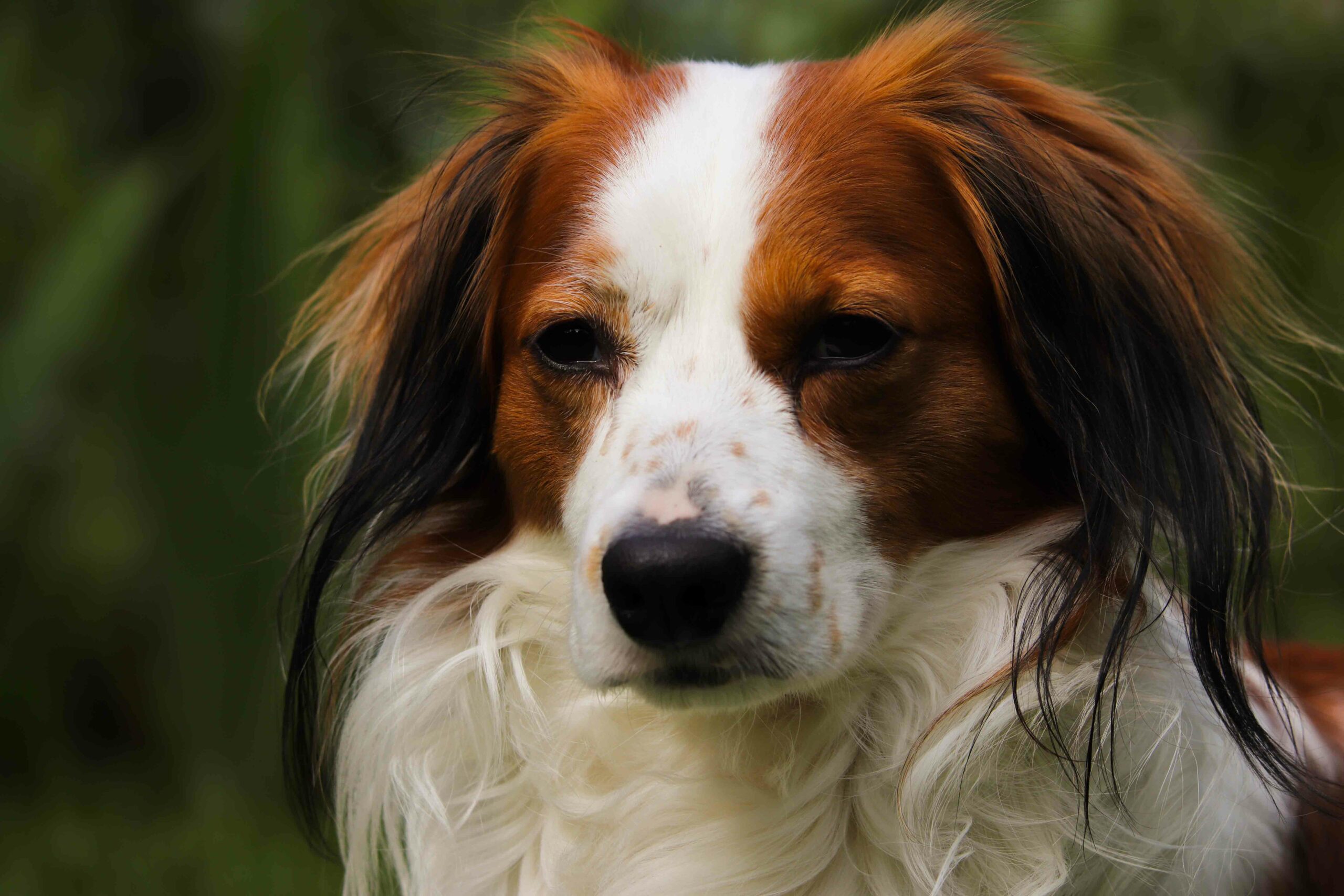
The Kooikerhondje, a dog with a storied past tied to the Netherlands, started as a practical worker in luring and retrieving. The breed’s evolution mirrored the changing face of hunting, adapting to new methods and environmental shifts. This journey from sensible worker to recognized breed unfolds in several vital phases, marking the Kooikerhondje’s role in decoy work.
- The breed appeared in the Netherlands around the 1500s.
- They were commonly used in duck decoy systems to lure waterfowl.
- The breed evolved alongside hunting practices over the years.
- Official breed recognition and standards were established in the 1900s.
Originating in the Netherlands around the 16th century, the Kooikerhondje was initially used in duck decoy traps to draw in wild birds. Over centuries, the breed adjusted to the evolving hunting techniques. Finally, in the 20th century, the breed gained official recognition and a standard.
Historical Beginnings
The Kooikerhondje, a breed with roots in the Netherlands since before the 1500s, was once vital for duck hunting. These dogs were experts at guiding ducks into traps, showing their importance in Dutch hunting methods.
World War II almost wiped them out, but they bounced back, and in 1971, the Dutch Kennel Club officially recognized them. This move was more than just a nod to the breed’s survival; it highlighted the Kooikerhondje’s longstanding role in the country’s heritage.
The Dutch Kennel Club’s decision marked a critical moment, celebrating the breed as an integral part of the Netherlands’ history and culture as a skilled working dog.
Hunting Role Evolution
The Kooikerhondje began as a specialist in managing waterfowl, pivotal in luring ducks into elaborate traps called ‘eendenkooi.’ Over the years, these dogs have adapted to a broader hunting role within Dutch traditions. Their intelligence, agility, and willingness to learn have allowed them to transition from duck luring to performing various tasks in modern hunting practices. The Kooikerhondje remains a respected breed among hunters, valued for its versatility in waterfowl management.
Designed initially to manipulate duck behavior, the Kooikerhondje has grown into a multi-purpose hunting companion. The breed’s natural attributes have served it well, as hunting methods have modernized. The Kooikerhondje’s role has expanded, showcasing its capability in different hunting situations. This breed continues to be an integral part of the hunting community, upholding its tradition while adapting to current needs.
Breed Development Stages
The Kooikerhondje breed originated in the Netherlands during the 17th century, where they were first used in duck decoy systems. These dogs were highly valued for their ability to attract ducks into koois (cages or traps) with their playful antics. As they were bred for work, the Kooikerhondje needed to be intelligent, quick, and responsive to their handlers.
Over the years, the breed’s versatility came to light as they became popular as pets, admired for their friendly demeanor and ability to perform various dog-related activities.
Health has always been a priority in breeding Kooikerhondjes, particularly in monitoring for inherited diseases like von Willebrand’s disease, a clotting disorder. Breeders have focused on creating healthy dogs through careful selection, ensuring the longevity and well-being of the breed. This responsible approach to breeding is crucial for the Kooikerhondje’s continued survival and thriving populations.
Medium-Small Stature
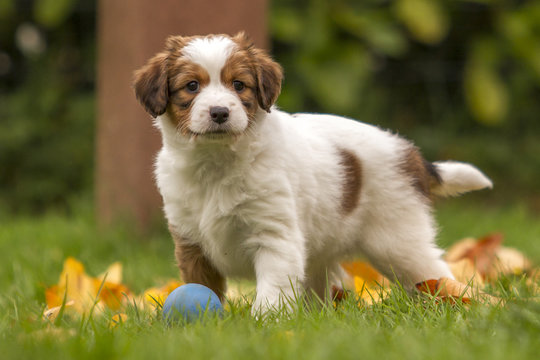
Potential dog owners should consider the Kooikerhondje’s compact size when considering their home environment and daily routine. Understanding their growth trends is vital to ensure they mature healthily and to set up suitable exercise plans. Their stature also influences how they interact with kids, being robust enough for playtime yet conveniently sized for easy handling.
- Breed Size Details: A detailed look at the Kooikerhondje’s typical height and weight.
- Suitable Habitats: An evaluation of the breed’s flexibility in adapting to different types of homes.
- Growth Milestones: A study of this breed’s normal growth stages and pace.
- Activity Needs An assessment of the exercise necessary to keep a Kooikerhondje healthy and happy.
Kooikerhondjes possess a versatile nature that allows them to thrive in various living situations, from apartments to houses with yards. Monitoring their growth is crucial for their overall well-being, as is providing enough physical activity to meet their energy levels. Their friendly demeanor makes them great companions for children, provided they are supervised to ensure safe play.
Breed Size Overview
Kooikerhondjes are charming dogs that stand about 15-16 inches tall and usually weigh between 20-30 pounds, placing them in the medium-small size range within the Sporting Group. These dogs are known for their compact size and agility balance, with male dogs generally a tad taller than females. They have a hearty lifespan of about 12-15 years, which shows their hardiness despite their modest size.
Being part of the Sporting Group means Kooikerhondjes are alert and full of energy, traits necessary for their traditional role in hunting. Their size makes them nimble and quick to respond, qualities beneficial for various activities that demand sharp minds and agile bodies. These dogs are well-suited for active households where they can thrive with engagement and exercise.
Ideal Living Spaces
To create a comfortable living space for medium-small dogs like the Kooikerhondje, it’s vital to consider their need for regular exercise and ability to adapt to different environments. Although compact enough for apartment living, these dogs require daily physical activity to stay healthy. This means setting aside time daily for walks and playing in a safe area.
Kooikerhondjes are known for being calm and well-mannered, which makes them great companions in various home setups. They do well with a small backyard, but keeping their minds and bodies active is essential for their contentment. Training focusing on positive reinforcement and regular interaction with people and other dogs is critical to nurturing a happy Kooikerhondje.
Physical Growth Patterns
Nederlandse Kooikerhondjes are small to medium-sized dogs, with males typically reaching about 16 inches in height and females about 15 inches. They usually weigh between 20 and 30 pounds when fully grown. These dogs have a steady growth rate and can live for 12 to 15 years.
Providing them with proper nutrition for their growth needs is vital for reaching their full size and maintaining good health. Regular exercise and mental activities are essential to keep them healthy and prevent problems like obesity. Proper care ensures they grow healthy and reach their optimal size.
Exercise Requirements
Regular exercise is vital for the well-being of the Kooikerhondje, a medium- to small-sized dog. These dogs need a consistent moderate exercise routine to stay healthy and avoid gaining extra weight. A mix of physical activity and brain games keeps them fit and mentally sharp, catering to their lively disposition. Taking them for brisk walks is a great way to get them moving, and playtime keeps their minds active.
For a Kooikerhondje, a blend of outdoor fun and social interaction is perfect for their active lifestyle. Regular physical and mental challenges are vital to keeping them happy. This breed is an excellent match for families who love to stay on the move.
- Regular exercise is essential for Kooikerhondje’s well-being.
- Moderate exercise and mental stimulation keep them healthy and happy.
- It is ideal for active families who enjoy outdoor activities.
Compatibility With Children
Kooikerhondjes, known for their friendly nature and manageable size, can be great pets for families with children when adequately introduced, and everyone is taught how to interact safely. These dogs are typically gentle and make pleasant companions, fitting in well with the household. Early socialization and obedience training are critical to ensuring the dog gets along well with the younger family members.
Because Kooikerhondjes can be a bit shy around strangers, it’s necessary to introduce them to new people carefully, creating positive experiences to build a trusting relationship. Teaching kids how to approach and handle Kooikerhondjes is essential for forming a respectful and safe bond. Supervision during play ensures a safe space for the dog and the children, which helps develop a solid and happy relationship.
Temperament and Cheerful Disposition
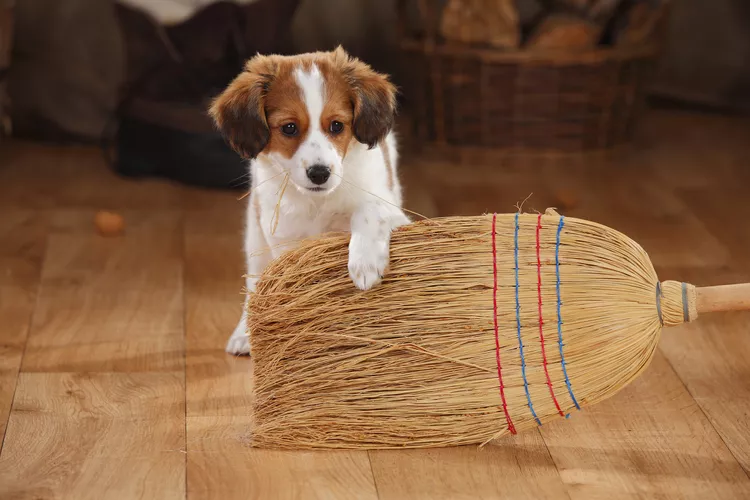
The canine Kooikerhondje is known for its bright and sunny demeanor, a standout feature of this breed’s personality. This upbeat attitude shapes how they act and relate to others, making them excellent for companionship and engaging activities.
Looking closely at their temperament, we see qualities that make them thrive in family environments. Their joyful personality makes them a hit with families looking for a loving pet. Their tendency to engage in playful antics promotes physical exercise and mental well-being. They’re naturally friendly, making friends quickly with people and other pets. Their eagerness to learn and desire to please is evident in their positive response to dog training.
Joyful Nature Traits
The Kooikerhondje breed is known for its cheerful disposition and boundless energy, making it a great partner for various activities and a wonderful family pet.
These dogs are warm and friendly, always ready to engage with their human companions. Their sharp minds and attentive nature make them great for outdoor fun, where they respond quickly to their surroundings.
Kooikerhondjes are also resilient and have plenty of stamina, traits serve them well in both work and play. Their moderate hunting instincts mean they are always looking for something interesting.
These traits make the Kooikerhondje a happy, affectionate, balanced dog breed.
Engaging Play Behavior
Kooikerhondje dogs are known for their friendly and outgoing nature, which shines through in their playfulness. They love interacting with people and show their happiness with lively play. These dogs benefit greatly from training that uses positive feedback to encourage good behavior.
Their energetic play style is rooted in their history as working dogs that needed to keep going for long periods. Through the proper training, their energy can be channeled into enjoyable play sessions.
These playful dogs are a joy to have around, providing fun and companionship. Their playfulness is a core part of who they are and contributes to their mental and physical health.
Social Interaction Needs
Kooikerhondjes thrive on playful interactions and need regular social contact, often showing their joyous nature when around their human families. They tend to be generous and friendly, making them great household pets.
These dogs are also known to get along well with others in public spaces like dog parks, where they’re typically easy to get along with and welcome new people and other dogs. They adjust well to different social situations, contributing to positive experiences for everyone involved.
Kooikerhondjes’ happy-go-lucky attitude strengthens family ties and ensures they’re a hit in various social circles, perfect for families that love to stay active.
Positive Training Response
Kooikerhondjes are naturally drawn to positive reinforcement when it comes to training, and they react with excitement when rewarded or praised. Their bright personalities make them eager participants in learning, especially when using operant conditioning techniques. Operant conditioning is simply training that involves giving rewards for good behavior.
When you train a Kooikerhondje with treats, affection, or kind words, you’ll likely see them follow instructions more willingly and quickly pick up new skills. It’s not just about the treats for these dogs—they also have a social drive to make their human companions happy. Kooikerhondjes can become exceptionally well-trained pets with the right approach that taps into their playful spirit.
Emotional Bonding Strength
Kooikerhondjes are known for their cheerful personalities, which make them excellent companions and family pets. These dogs have a history of hunting, contributing to their resilient and upbeat character and helping to create strong connections with their owners. They adapt well to new situations, which allows them to bond quickly with their families.
The Kooikerhondje are eager to please and naturally friendly, making them a perfect match for a household environment. Their loving nature means they offer warmth and loyalty, becoming valued family members. The ability of the Kooikerhondje to form deep emotional ties with their humans is a crucial aspect of what makes them such delightful pets.
Genetic Health Risks
The Kooikerhondje, a charming rare breed, is not immune to specific health issues inherited through their genes. It’s crucial for those looking to bring a Kooikerhondje into their family to be aware of these conditions and prioritize routine health screenings. These checks are vital in preserving the well-being and extending the lifespan of these dogs.
Kooikerhondjes have a known risk for von Willebrand’s disease, type 3, which affects their blood’s ability to clot. They also tend to develop chondrodystrophy (CDDY), which can lead to intervertebral disc disease (IVDD), a painful condition affecting the spine. Owners must understand these risks to provide the best care for their dogs.
Early identification of these diseases through genetic tests can be a lifesaver. Detecting issues before symptoms arise allows for prompt and effective management. This approach can significantly enhance Kooikerhondje’s quality of life.
Taking proactive steps, such as regular veterinary visits and adhering to a preventive care plan, can help to lessen these genetic health risks. Responsible breeding practices are also vital in reducing the incidence of inherited diseases in future generations of Kooikerhondjes.
Inherited Disease Risks
Knowing the genetic health risks of Kooikerhondje dogs is vital for their well-being. These dogs often face genetic issues like Chondrodystrophy (CDDY) and Intervertebral Disc Disease (IVDD) that can cause spinal problems and affect their mobility and comfort. They are also susceptible to von Willebrand’s Disease, type 3, which is a severe bleeding disorder.
DNA tests like Wisdom Panel™ Premium, including over 200 health screenings, can reveal these genetic risks. Early genetic testing helps breeders and dog owners make informed decisions about breeding and health care for Kooikerhondjes.
Common Kooiker Ailments
The Kooikerhondje breed is known to have specific genetic health issues, including patellar luxation, hereditary necrotizing myelopathy (ENM), and polycystic kidney disease (PKD). Owners should be vigilant and manage these conditions actively.
Patellar luxation involves the dislocation of the kneecap and can impact a dog’s ability to walk or run; surgery may be necessary to correct it.
ENM is a severe spinal condition that causes progressive paralysis, and unfortunately, there’s no cure, which makes genetic testing crucial.
PKD leads to cysts in the kidneys and can deteriorate kidney function.
Because Kooikerhondjes have floppy ears, they’re more prone to ear infections. It’s essential to keep their ears clean to avoid this problem.
It’s also wise to watch their food intake. Keeping them at a healthy weight is vital because being overweight can put more strain on their joints and lead to other health issues.
Preventative Health Measures
For Kooikerhondjes’ health, it’s vital to conduct regular genetic screening. These tests help catch issues like von Willebrands disease, cataracts, and hereditary necrotizing myelopathy early. Seeing these problems early means better management and a healthier life for the dog.
Von Willebrand’s disease, in particular, can lead to dangerous bleeding if it’s not detected. A tool like Wisdom Panel™ Premium offers more than 200 genetic health tests, which is very helpful in spotting potential health risks. Using genetic test results to inform a vet’s care plan can make a big difference.
It helps set up the proper preventative care, even for a dog’s teeth, to stop any problems that could hurt their dental health. This way, a Kooikerhondje can enjoy a whole and happy life.
Grooming Essentials
Caring for your Kooikerhondje’s coat is essential for their overall health. Regular grooming keeps their fur looking good and supports skin health while preventing fur from becoming tangled or matted. Here’s how to keep your Kooikerhondje looking its best:
Regular brushing is vital to keep your dog’s coat smooth and free from tangles. The Kooikerhondje, which has a beautiful medium-length coat, means brushing a few times a week to prevent mats from forming.
Bathing your Kooikerhondje shouldn’t be done too frequently to avoid stripping the coat of its natural oils. Depending on their activity level and time spent outdoors, a bath every few months is often enough unless they get filthy.
Trimming your dog’s nails is more than a cosmetic issue; it’s about comfort and health. Overgrown nails can cause pain and lead to problems walking or running. So, regular nail trimming is a must, generally every 1-2 months, but this can vary depending on how quickly your dog’s nails grow.
Ear cleaning is not something to overlook, as Kooikerhondjes can be prone to ear infections. Clean their ears gently but thoroughly to remove any buildup and keep them dry to prevent bacteria and yeast from flourishing.
Implementing these grooming practices will ensure your Kooikerhondje stays happy, healthy, and looks great.
Coat Care Routine
To keep your Kooikerhondje’s coat shiny and healthy, follow a grooming schedule that includes brushing every week. Cleaning their ears, taking care of their tail, and trimming their nails are also important aspects of their grooming routine. Additionally, the occasional visit to a professional groomer can significantly benefit their coat’s condition.
Their coat, which is of medium length and similar to that of sporting dogs like the Nova Scotia Duck Tolling Retriever, requires regular attention to reduce shedding and preserve its shine.
Clean your dog’s ears regularly to prevent infections, especially since their floppy ears can trap moisture. Grooming their tail is essential, too; it keeps the white plume free of knots and looking its best. Trimming their nails is crucial not only for the dog’s appearance but also for its comfort and ability to walk correctly.
While at-home care is essential, taking your Kooikerhondje to a professional groomer from time to time can significantly benefit their coat’s condition.
Regular Brushing Benefits
Regular brushing is vital to keeping a Kooikerhondje looking and feeling its best. Brushing at least once a week, around 52 times a year, can reduce shedding and stop mats from forming in their coat. This grooming habit helps to get rid of dead hair, which cuts down on the amount of hair around your home.
When you brush your Kooikerhondje regularly, you’re more likely to spot any skin issues or unwanted guests like fleas early on. Catching these problems early means your dog can get the necessary care promptly. Brushing also stimulates blood flow, which is good for your dog’s skin health and helps spread their skin’s natural oils, giving them a shiny coat.
Regular grooming is more than just keeping your dog looking good; it’s a chance to strengthen your bond with your pet. It creates a feeling of trust, making grooming sessions a calm and positive experience for both of you.
Bathing Frequency Tips
Knowing how often to bathe your Kooikerhondje helps keep their coat healthy and clean. They should be washed every 6-8 weeks, but this can vary based on how much time they spend outside and how dirty they get. If your dog loves to play out and often gets muddy, you might need to adjust their bath schedule accordingly.
Using a shampoo made for dogs is critical to protecting their skin oils, which are vital for their coat’s health. Brushing your dog regularly is also essential to prevent knots and reduce the need for baths.
Talking to a professional groomer can be very helpful if you’re unsure about the best way to care for your Kooikerhondje’s coat. They can provide you with grooming tips specific to your dog’s needs.
Nail Trimming Importance
Grooming your Kooikerhondje involves more than just a bath and brushing its coat. Nail trimming is vital to their care and supports their hygiene and overall health.
The American Kennel Club highlights the necessity of this practice for all dog breeds, the Kooikerhondje included. Keeping their nails short is essential to prevent them from growing too long, which can cause the nails to split and hurt the dog, especially when walking or playing.
Short nails help prevent painful injuries if a dog’s nails get caught on something. This also allows the Kooikerhondje to walk correctly and maintain their posture. Ignoring nail care can lead to changes in their walk and joint issues, harming their ability to move around.
Regular nail trimming isn’t just good for their health; it’s also a chance to spend quality time with your dog and reinforce good behavior with treats and praise.
Ear Cleaning Practices
Regular ear care is vital for the health of Kooikerhondje dogs, mainly due to their active nature. Checking and cleaning their ears consistently helps prevent infections and wax buildup.
Handlers should use a cleaner recommended by their vet and gently wipe the dog’s outer ear with a cotton ball, avoiding the sensitive inner ear. If there are signs of trouble like redness, swelling, or a bad smell, it’s time for a vet visit.
Regular cleaning keeps the Kooikerhondje’s ears dry and clear, supporting their overall health and readiness for activity.
Dietary Requirements
Regarding Kooikerhondjes, providing them with a balanced diet that meets their specific nutritional needs is critical. A feeding schedule can effectively prevent weight issues and maintain steady energy levels. Recognizing and addressing common food allergies or sensitivities in these dogs is essential to their overall health.
- Nutrition that supports vitality and well-being.
- Regular meal times to manage weight and energy.
- Awareness of potential allergic ingredients in dog food.
- Tailored diets for individual health concerns.
For Kooikerhondjes, a diet rich in proteins, fats, and carbohydrates is necessary for their active lifestyle. Small, frequent meals can help control their appetite and keep their metabolism in check. Ingredients such as beef, chicken, or dairy can sometimes trigger allergies, so monitoring your dog for adverse reactions is essential. If a sensitivity is identified, alternative sources like fish or novel proteins may be recommended.
Regular vet check-ups and discussions about your Kooikerhondje’s diet will ensure they get the proper nutrients. Pet owners should also be vigilant about changes in their dog’s condition that might point to dietary issues. Adapting the diet to suit each dog’s unique needs helps them lead a happy and healthy life.
Optimal Nutrient Balance
Maintaining the right balance of nutrients is critical for Kooikerhondje’s health and energy. These dogs need a mix of protein, fats, carbohydrates, vitamins, and minerals, matching their age and activity. Initially bred for duck hunting, Kooikerhondjes are energetic and need food that can keep up with their lifestyle.
As they become more well-known, paying close attention to their diet is essential. It’s best to work with a vet to create a feeding plan that’s just right for your Kooikerhondje. They’ll make sure your dog gets everything it needs. Dogs also need to drink plenty of water to help with nutrient use and digestion.
Keep an eye on your dog’s weight and overall health to ensure the diet is still working well, and adjust as needed to keep them in top shape.
Feeding Schedule Suggestions
Like many dogs, Kooikerhondjes can put on weight quickly, so keeping them on a regular feeding routine is essential. Stick to two nutritious meals daily to help control their weight and keep them healthy.
Every Kooikerhondje is different, and their meals should be personalized to match their size and activity level. Measuring their food carefully is important because giving them too much can lead to obesity.
Work with your vet to create a diet plan that’s just right for your Kooikerhondje, considering any health issues they might have. Feeding them at the exact times each day and ensuring they get the right amount of food will go a long way in keeping your dog happy and healthy.
Common Allergies & Sensitivities
Creating a consistent routine for feeding your Kooikerhondje is essential for their well-being, but it’s also necessary to be vigilant about their dietary needs and potential allergies. These charming dogs are becoming more popular in the US and are known to have food sensitivities.
Common triggers include ingredients like beef, dairy, wheat, and soy, which can cause allergies in these dogs. They might also react to specific proteins such as chicken or lamb.
To keep your Kooikerhondje healthy, especially when they’re active in tasks like search and rescue, watch their diet closely for any signs of discomfort. Trying a diet with limited ingredients and introducing uncommon proteins such as venison or duck may help reduce the chance of allergic reactions.
If you suspect your dog has a food allergy, your vet may suggest an elimination diet to identify the exact cause. Look out for symptoms such as itching, skin redness, ear infections, or gastrointestinal problems and make necessary changes to their diet to resolve these issues.
